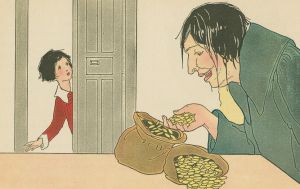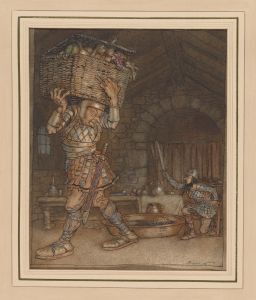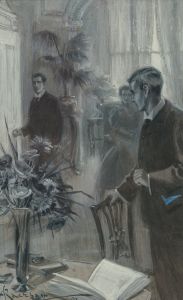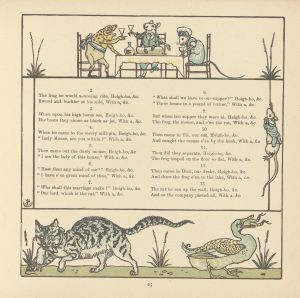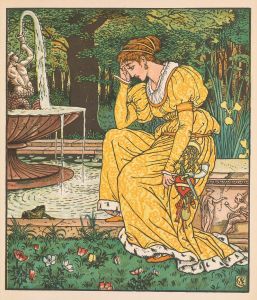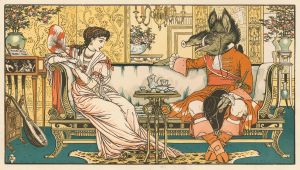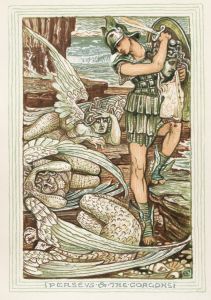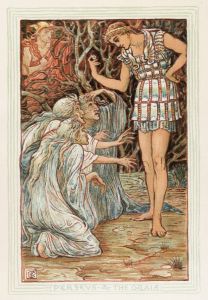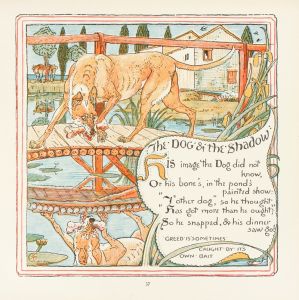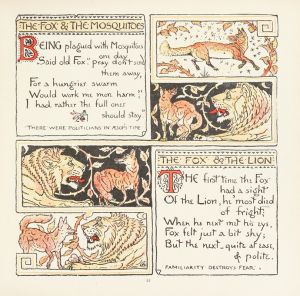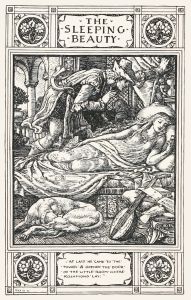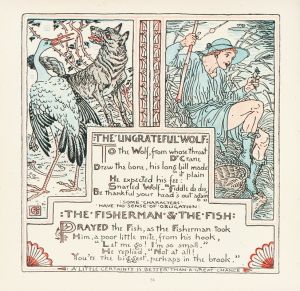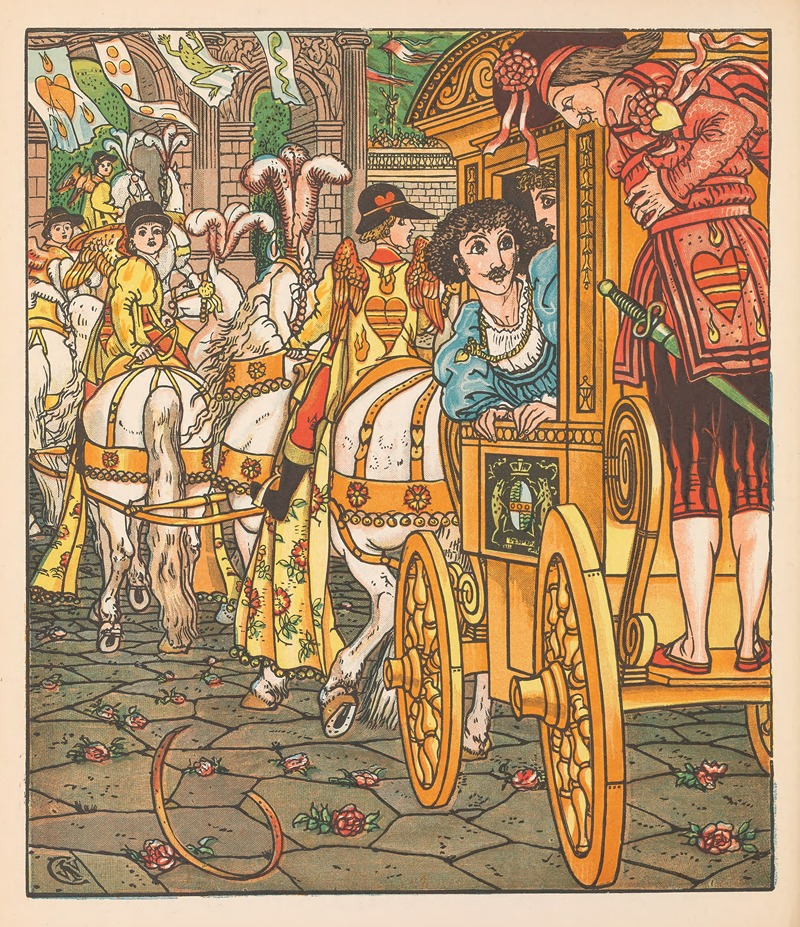
Beauty and the beast Pl. 11
A hand-painted replica of Walter Crane’s masterpiece Beauty and the beast Pl. 11, meticulously crafted by professional artists to capture the true essence of the original. Each piece is created with museum-quality canvas and rare mineral pigments, carefully painted by experienced artists with delicate brushstrokes and rich, layered colors to perfectly recreate the texture of the original artwork. Unlike machine-printed reproductions, this hand-painted version brings the painting to life, infused with the artist’s emotions and skill in every stroke. Whether for personal collection or home decoration, it instantly elevates the artistic atmosphere of any space.
Walter Crane was a prominent English artist and book illustrator, born on August 15, 1845, in Liverpool, England. He was a leading figure in the Arts and Crafts Movement and is best known for his illustrations of children's books. Crane's work is characterized by its intricate detail, vibrant colors, and the incorporation of elements from various artistic traditions, including Pre-Raphaelite and Art Nouveau styles.
"Beauty and the Beast Pl. 11" is one of Crane's illustrations for the classic fairy tale "Beauty and the Beast." This tale, which has been adapted numerous times across various media, tells the story of a young woman named Beauty who becomes the prisoner of a fearsome Beast, only to discover that he is, in fact, a prince under a curse. The narrative explores themes of love, sacrifice, and the transformative power of kindness.
Walter Crane's illustrations for "Beauty and the Beast" were part of a larger collection of fairy tales that he illustrated during the late 19th century. These illustrations were published in various editions, often as part of Crane's "Toy Books" series, which were designed to be both educational and entertaining for children. Crane's work in this series was notable for its ability to capture the imagination of young readers through vivid imagery and dynamic compositions.
In "Beauty and the Beast Pl. 11," Crane employs his signature style, which includes a harmonious blend of line and color. His use of decorative borders and attention to detail reflect the influence of the Arts and Crafts Movement, which emphasized craftsmanship and the beauty of handmade objects. Crane's illustrations often featured elaborate floral motifs and a strong sense of symmetry, both of which are evident in this particular plate.
Crane's contribution to the world of illustration was significant, as he helped to elevate the status of children's book illustrations to a form of fine art. His work was influential in shaping the visual language of children's literature during the Victorian era and beyond. Crane's illustrations are celebrated for their ability to convey the essence of the stories they accompany, bringing characters and settings to life with a sense of wonder and enchantment.
Throughout his career, Walter Crane was also an advocate for social and political causes, including the promotion of education and the improvement of working conditions for artists and craftsmen. His commitment to these ideals is reflected in the quality and accessibility of his work, which continues to be appreciated by audiences today.
In summary, "Beauty and the Beast Pl. 11" by Walter Crane is a testament to the artist's skill and creativity. It exemplifies his ability to blend artistic beauty with narrative depth, making it a cherished piece in the history of book illustration. Crane's legacy endures through his contributions to the visual arts and his influence on subsequent generations of illustrators.






